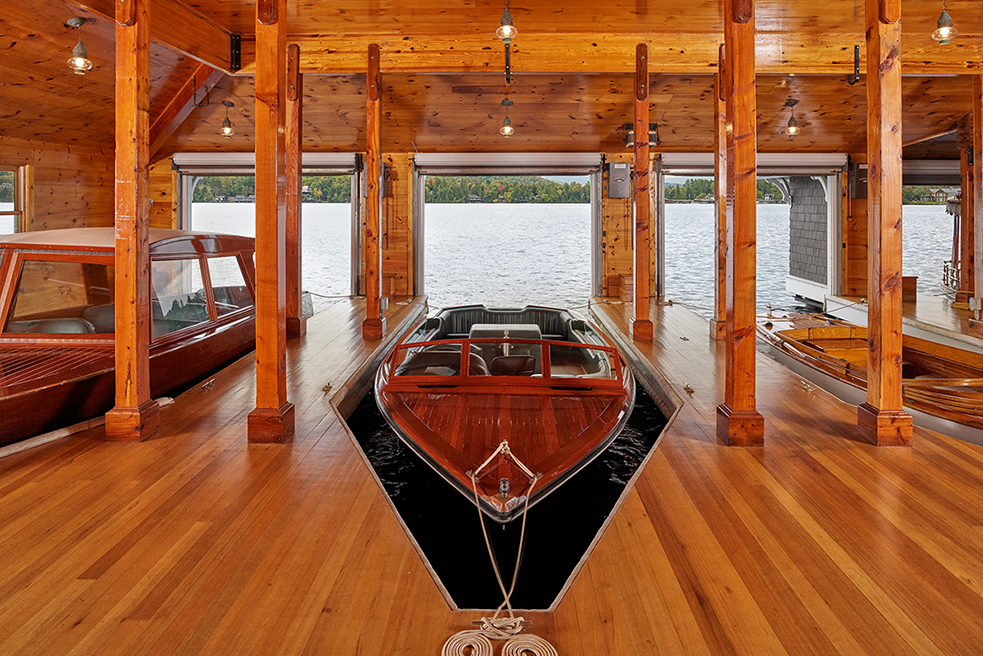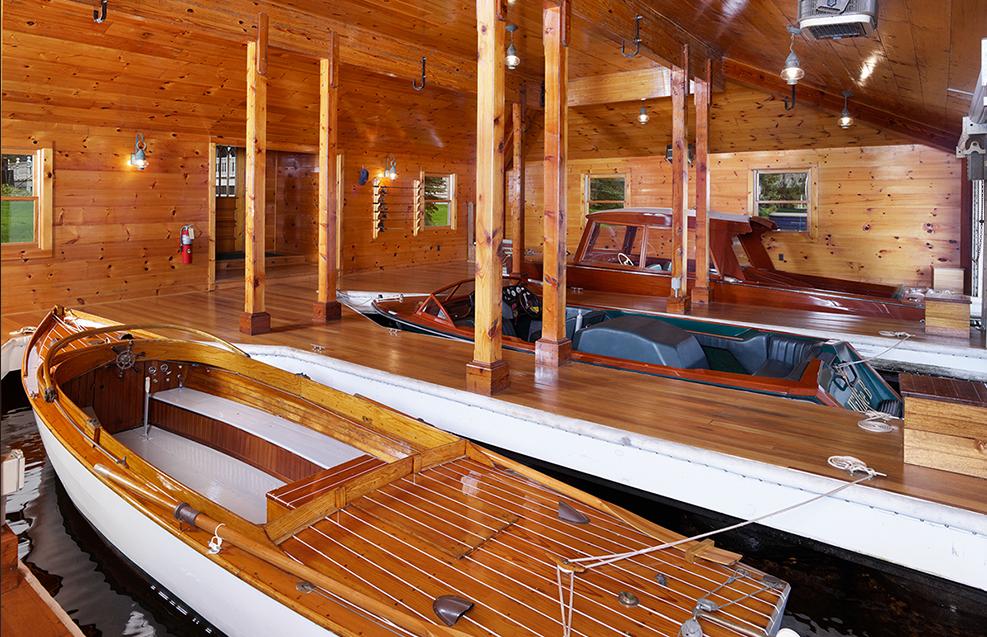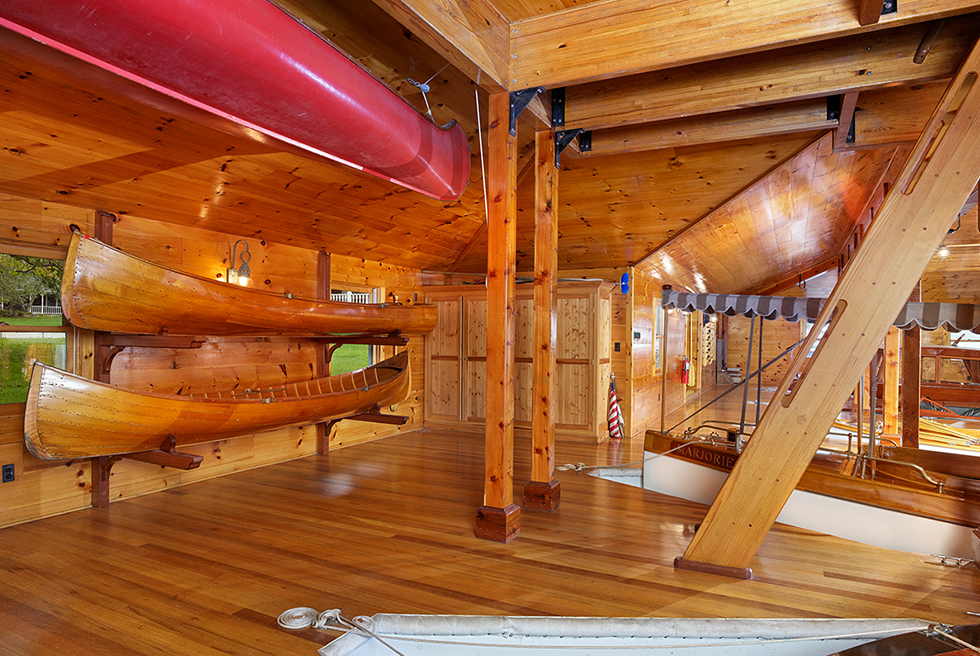
Traditional Boat Houses: Exploring this Little Treasure of the Adirondacks
Boating is such an important part of the Adirondack lifestyle and most of the grand lakefront camps and estates have traditional boat houses that serve as lovely little garages for the watercraft.
But while these boat houses may be omnipresent partners to nearly every home on the Adirondack Lakes, their ubiquity doesn’t take away any square inch of their charm.
“They’re a real treasure to design and build,” says chief architect Marc Camens, who worked almost exclusively in the Adirondacks before relocating to Kiawah Island. So, it’s always a treat for him when a project takes him back to his mountain roots — and includes a boat house like this camp residence in Lake Placid, New York.
Activating form and function
A historical structure that has its roots in the 1800s, the Adirondack boat house has been important to the lifestyle in the area for centuries. Often a key part of an Adirondack camp-style estate, it serves as the storage vessel for guide boats and other watercraft.
But the functional purpose of the boat house is only part of the story. Naturally, they must align with the aesthetic — and the building rules and regulations — of the region.

Navigating the waterfront
The Adirondack Park Agency (APA) has strict building requirements for the area — and rightfully so, to maintain the integrity of its natural beauty. The goal is for homes and structures — right down to boat houses — to be discreet and integrated into the surrounding foliage.
For that reason, a boat house in the area can only be 14 feet tall, so it doesn’t break the tree lines that surround the lakes. But while small and unobtrusive in scale, their architecture still must be significant enough to carry the Adirondack detail.
“It’s important for the boat house to keep a low-profile to not overpower the lakefront yet there’s still a real beauty to their design with rustic yet refined twig work, neat windows, hip roofs, and really beautiful wood interiors,” says Camens.

Responding to nature
As Camens quips, the boat house and the Adirondack Lakes go together like “ham and cheese.” And what a beautiful sandwich. But, the perfect melding of manmade structure and nature is representative of all Camens’ work.
From Lake Placid and the Adirondacks to Kiawah Island and back again, no matter the location, he designs every project in response to natural environments. This approach requires firsthand experience of the site while managing external criteria that can create design constraints.
Done well, a home’s architecture unites its residents to the vastness of the surrounding environment — inviting in the natural elements while achieving maximum comfort and alignment.
See more examples of Camens’ work in our portfolio of custom homes, which all resonate with the natural world in beautiful and compelling ways.
